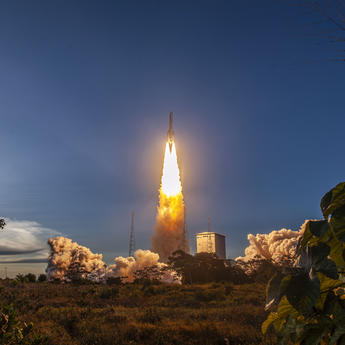"A ‘narcoboat’, as we call the drug traffickers' boats, sails at between 50 and 60 nautical knots with its three or four outboard engines. At this speed, these boats can cross the Strait of Gibraltar in no time," explains Jesús Guardia, Area Head of the Customs Surveillance Service. "We need the helicopters to be able to locate, track, pursue and intercept these boats. Our objective is that these boats do not manage to reach the coast and offload their cargo generally tobacco, hashish or cocaine.
The Customs’ Dauphins have their bases in the hotspots of drug trafficking on the Iberian Peninsula. The main one is in Algeciras to control the passage through the Strait of Gibraltar; the second is in Almería to stop traffic in the Alborán Sea, and the third is in Vigo, patrolling the Rías Baixas area, in particular. Another intermittent base, in the area of Murcia, controls drug trafficking in the Mediterranean, which supplies narcotics to Catalonia and the south of France.

Tracking and pursuit
"We carry out routine tracking flights, especially in the Strait of Gibraltar and the "meeting point" area in the Alboran Sea, whose name speaks for itself," explains Jesús. "The flights are mainly at night and we carry them out with the collaboration of our vessels - we have 45 patrol boats for these tasks - and also land units. We carry out pursuit missions when the vessel has already been located by our colleagues and the Dauphin's speed is needed to prevent the cache from reaching the coast. Finally, we also take part in complex operations that go beyond small-scale drug trafficking, which consist of beaconing, tracking and boarding other types of vessels controlled by the Intelligence Department, which are sometimes sailing or cargo vessels, often carrying tonnes of drugs".
More than 200 tonnes of drugs seized
Each year, the Dauphins and the Customs’ BK117 fly for an average of 2,400 hours. To ensure the success of the missions, there are always two pilots and one or two customs agents on board the Dauphin, who manage the mission console and coordinate communications with the maritime patrols.
"The Dauphin is very well suited to our operations because the maritime patrol configuration is just what we need. It is a very fast helicopter, and speed is essential in intercepting the boats. We have a range of three and a half hours flying time with the long range supplementary tanks," says Jesús. "They are equipped with search systems such as an electro-optical system, radar, and of course a search light, as well as satellite communications and tactical systems.”
Latest News
Continue Reading

Airbus ships fourth European Service Module for Artemis IV
Press Release
Space
Fourth European Service Module (ESM-4) is ready to leave Airbus’ facilities in Bremen, Germany, and be shipped to NASA’s Kennedy Space Center, Florida, USA
Sentinel-1D: the radar that never sleeps
Web Story
Space

Airbus-built SpainSat NG-II secure communications satellite successfully launched
Press Release
Space

Airbus, Leonardo and Thales sign Memorandum of Understanding to create a leading…
Press Release
Company

Tracking air pollution from space
Web Story
Space
